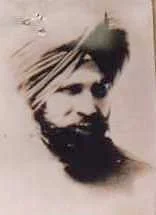The Build Up
Sant Gyani jarnail singh ji khalsa bhindranwale
Sant Gyani Jarnail Singh Ji Khalsa Bhindranwale is honoured as the most exemplary Sikh of the 20th Century by Sri Akal Takhat for his farsighted leadership, his sagacious nature, and his steadfast stewardship of the Panth towards reclaiming our sovereignty, Sant Ji was a rare and truly inspirational Sikh of the Guru.
Sant Ji’s Jivan as a Gursikh and his leadership in mobilising the Quam are pivotal to understanding why the Indian state launched a full-scale military assault on Sri Darbar Sahib.
In 1982 Sant Ji initiated the Dharam Yudh Morcha reigniting and galvanising over a century of Sikh resistive efforts that had taken various forms since the annexation of the Khalsa Panth by the British in 1849. Around the same time, the political party, Akali Dal, seeking to contain Sant Ji’s political activities and utilise his mass popularity asked him to merge the Dharam Yudh Morcha with the economic, linguistic, and territorial demands laid out in the Anandpur Sahib Resolution.
The Akali Dal was a Sikh political party that wanted to work within the political system of India to re-establish Sikh political autonomy in Punjab. Sant Ji understood that in reality India would not tolerate sovereign Sikh power within its borders and would continue to undermine Sikh institutions and way of life. Sant Ji consolidated all the anti-India Sikh opposition establishing a clear sovereign Sikh political position, educating and politically organising Sikh Sangat to confront the realities of life within the enclosure of India.
Sant Ji advocated that through Sikhi Parchaar (Sikhi education), Sangat (Sikh community), Bana (Sikh dress), Bani (Sikh meditation), and Shastar (power of arms) the Panth can assert its sovereignty and resistance in the struggle to exercise our Patshahi. Sant Ji mobilised the Sangat to directly address the shift in political power and social organisation of the Khalsa Panth represented by the envelopment of Sikhi and Punjab into the colonial project of forced hegemonisation that is India. Sant Ji’s unflinching determination that Sikhs must have political agency and engage in organised resistance made him the central focus of the Indian government.
The entire structure of the modern world, manifested by the Indian state, mobilised all its machinery, academic, media, bureaucracy, political establishment, and security forces to annihilate “the brave Sikhs” it now labelled “a criminal tribe”.
The Indian state used mass propaganda to demonise and marginalise Sikh resistance, our mode of living, dress, and the indigenous institutions of the Khalsa Panth. Unjust laws were enacted to criminalise Amritidhari Sikhs giving state forces extraordinary powers of arrest sanctioning inhuman state violence to legitimise the elimination of Sikh resistance.




